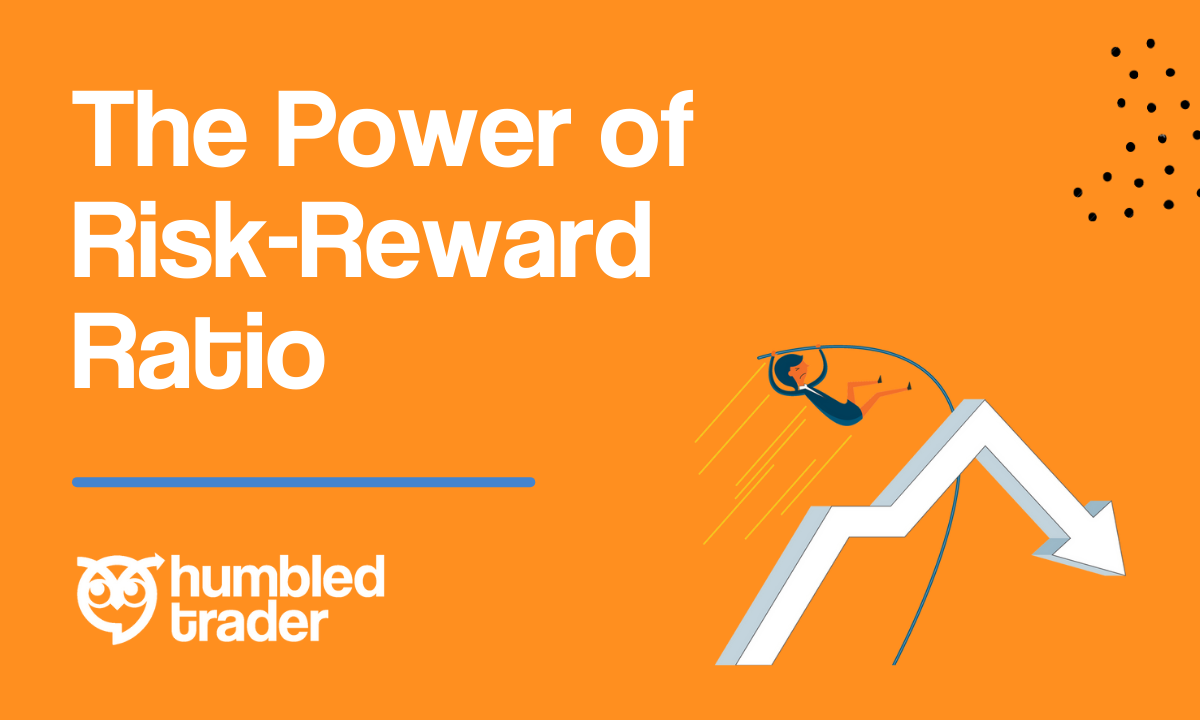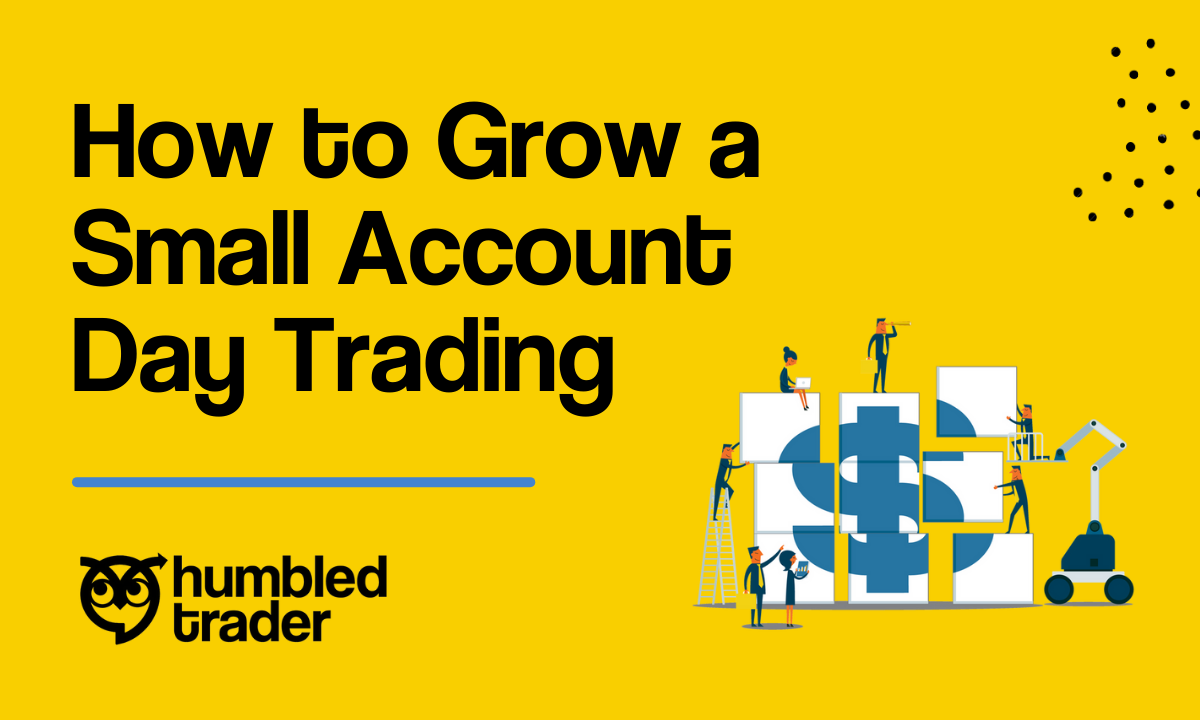Day Trading for Beginners: Understanding Risk and Reward

Risk and reward is a crucial concept every trader must learn before becoming successful because earning money in the market is not that difficult, but how to keep the money in your pocket is the challenge.
So, before kicking off your trading journey and dreaming about getting your Lamborghini. Here is the basic risk and reward knowledge you need to master as a beginner trader. Let’s dive in!
Day Trading for Beginners: Why Risk Management Is Important?
When you first start day trading, the first thing you learn should not be about how to trade, but how to manage your risk.
Reason #1: Risk management is the foundation of day trading
Risk management is the foundation of day trading. It’s like the foundation of a house. Before you start building anything on it, lay a solid foundation. Without it, anything built upon it is likely to crumble.
The same applies to day trading: if you don’t have a solid foundation of risk management, you will never become profitable.
Reason #2: No one can predict the future
Another golden rule in day trading: No one has a crystal ball that can predict the future.
That means no trader can control how much profit they make. However, they can also control how much they are willing to lose. That’s where risk management comes into play.
When the market is going against you, risk management limits the maximum loss you take in a trade. So you will always know what the worst-case scenario looks like before making a trade.
Real-life day trading example: Stopped out in longing $PDD with risk management
Well, trading doesn’t always go your way, even for a professional trader like me. Here is one of my bad days in trading. With risk management, I didn’t lose a lot.
I was in a bad trade, going long on $PDD. I bought the stock at $49.
As you can see from the chart, the price quickly flushed down from daily support of $49 to $39. Potentially, I could have lost almost $10,000 if I didn’t have proper risk management.
Luckily, I did have stopped out at $45, which allowed me to end up losing only $1,000! So, knowing risk management and when to step out of a trade is essential in day trading.
What is stopped out?
When a trader has to exit their position with a loss on a stop-loss order.
Day Trading for Beginners: Risks and Rewards in Day Trading?
To apply risk management to trading, you need to understand the concepts of risk and reward.
What are the risks and rewards?
Risk refers to potential losses or negative outcomes when executing a trade, while rewards represent potential gains from successful trades.
Understanding risk and reward is crucial for beginner day traders, as it enables informed decision-making and effective trade management. By mastering risk and reward, beginners can develop a trading strategy aligned with their goals, paving the way to day trading success.
What is a risk-to-reward ratio for day traders?
The risk-to-reward ratio is the ratio that compares the potential profit to the potential loss of a trade.
For example, if you have the potential to earn $100 (reward) and to lose $100 (risk) in a trade. You have a 1:1 risk-to-reward ratio. But if you have the potential to earn $200 while only risking $100, you have a 1:2 risk-to-reward ratio.
Risk Reward Risk-Reward Ratio $100 $100 1:1 $100 $200 1:2 $100 $300 1:3Risk-to-reward ratio and winning rate
The risk-to-reward ratio is the key to day trading success. Despite a low winning rate, you can still earn money with a high risk-to-reward ratio. Here is how you can achieve it.
1:1 risk-to-reward ratio with a 50% winning rate
In the following example, you can see that 10 trades have been made with a 1:1 risk-to-reward ratio, and they have a 50% winning rate. The result almost breaks even. (A loss of $5) Here, we don’t take into account the commission fee and platform fee. Plus, most beginner traders don’t have a high winning rate of 50%.
It’s more likely you will lose money if you have a 1:1 risk-to-reward ratio.
2:1 risk-to-reward ratio with a 50% winning rate
With the same 50% winning rate, but by adjusting the risk-to-reward ratio, the results can be quite different, ending up at an earning of almost $500.
2:1 risk-to-reward ratio with a 40% winning rate
This is a practical example for beginner day traders with a 40% winning rate and a 2:1 risk-to-reward ratio. Even with this winning rate, you will still be in profit with $190.
What makes a good risk-to-reward ratio?
A favorable ratio means that the potential reward is higher than the potential risk. For instance, a 1:3 ratio implies a $3 potential profit for every $1 risked. This 1:3 risk-to-reward ratio makes it an ideal target for traders.
Day Trading for Beginners: What Should Be the Risk Exposure/Trade Sizing in Risk Management?
Other than the risk-to-reward ratio, risk exposure or trade sizing is also crucial concepts to understand.
In short, risk exploration or trade sizing means the maximum amount you are willing to lose in a day or in each trade. As a beginner in day trading, it is recommended to start by risking 1% of your trading account.
For example, if you have $10,000 in your trading account, you should only risk $100 per trade each day, or $33.33 per trade if you plan to make a maximum of 3 trades per day.
Day Trading for Beginners: How to Set Up a Trade with Risk-Reward Ratio?
To set up a trade with a risk-reward ratio, follow these steps:
Determine entry point: Identify the price level to enter the trade based on technical analysis like support or resistance levels.
Set a stop-loss order: Place a stop-loss order at a price level representing your maximum acceptable loss, based on risk tolerance and market volatility.
Define target profit: Determine the profit level to exit the trade based on technical analysis or a predetermined target.
Calculate risk-reward ratio. Calculate the potential profit and loss. Divide potential profit by potential loss for the risk-reward ratio (e.g., 2:1 for a potential profit of $200 and a potential loss of $100).
Assess ratio: Evaluate the risk-reward ratio to align with trading strategy and risk management rules.
Adjust position size: calculate the appropriate position size based on the risk-reward ratio and acceptable risk per trade (usually a 1% percentage of the trading account for beginners).
Monitor the trade: Watch the trade closely and make necessary adjustments based on market conditions. Consider adjusting the stop-loss order if the trade moves in your favor.
Remember, a trade setup with a risk-reward ratio is only one aspect of successful day trading. Combine it with a solid trading strategy, proper risk management, and continuous learning.
Want To Learn More Trading Skills? Join the Humbled Trader Community!
If you are interested in learning more about risk management and more trading skills to help you navigate the market.
What you can learn from the course:
Day Trading Roadmap
Risk Management Foundations
Day Trading Strategies & Executions
Trading Psychology
And More Exclusive Humbled Trader Trading Strategies!
Join the Humbled Trader Community today and start your trading journey with us!
Join Our CommunityDay Trading for Beginners FAQs: Understanding Risk and Reward
What is the risk-and-reward ratio?
The risk-to-reward ratio is the comparison between the potential profit and potential loss of a trade. It helps traders assess whether a trade is worth taking based on the potential rewards in relation to the potential risks.
Why is risk management important in day-trading?
Risk management is crucial in day trading because it helps traders protect their capital and minimize potential losses. By implementing effective risk management strategies, traders can control the amount they are willing to risk on each trade, set stop-loss orders, and manage their positions in a disciplined manner.
What should be the risk-reward ratio for beginners?
For beginners, it is generally recommended to aim for a risk-to-reward ratio of at least 1:2. This means that the potential profit should be at least twice the potential loss. By maintaining a favorable risk-to-reward ratio, beginners can have a higher probability of achieving profitable trades and managing their overall risk exposure.
What makes a good risk-reward ratio?
A good risk-to-reward ratio in day trading is when the potential reward outweighs the potential risk. For example, a 1:3 ratio means that for every $1 risked, there is a potential profit of $3. This ratio is considered favorable and is often targeted by traders.
What is the maximum risk exposure per trader?
The maximum risk per trade depends on factors such as risk tolerance, trading strategy, and account size. Beginners should limit risk to around 1% per trade.
Don’t feel like reading? Watch the video.



